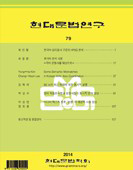학술논문
격과 인접조건
이용수 3
- 영문명
- 발행기관
- 현대문법학회
- 저자명
- 金在圭
- 간행물 정보
- 『현대문법연구』제1호, 241~271쪽, 전체 31쪽
- 주제분류
- 어문학 > 영어와문학
- 파일형태
- 발행일자
- 1992.03.01
6,520원
구매일시로부터 72시간 이내에 다운로드 가능합니다.
이 학술논문 정보는 (주)교보문고와 각 발행기관 사이에 저작물 이용 계약이 체결된 것으로, 교보문고를 통해 제공되고 있습니다.

국문 초록
영문 초록
With the abandonment of a lexical account for the linear order of complements, many linguists have sought to implicate a syntactic force. one effect this force has in English is to position the nominal complements to verbs before those of other categorial status. there are two aspects to this effect. First, the force involved singles out nominals : its signature is the ability to distinguish NPs from all other phrases. Second, the effect involves reserving the initial position among complements for these nominals. This paper examines the relationship between these two aspects to the problem, and concentrates more particulary on the causes for the second effect the NP First order of complements. That NPs must precede other complements can now be restated as the fact that case-marked positions precede others, and the force involed can be sought in the conditions under which Case is assigned. Pursuing this line of thinking, Stowell(1981) exploits the fact that the first position among the verbal complements in English is also the one closest to the Case-assigning verb and suggests, therefore, that Case is assigned to adjacent positions. This “adjacency condition” on Case assignment in conjunction with the Case Filter guarantees that NPs will precede other complements in English. there are two caveats to this scheme. First there are constructions where a verb appears to have two nominal complements bearing accusative Case, which is unexpected given a Case adjacency condition. Second there are situations where a verb has two NP complements, one in the accusative Case and the other in some other Case. Thus, these constructions encourage viewing the adjacency condition as one certain Cases but not others. It is conventional to restrict the adjacency condition to just structural Cases. But I believe this account for the NP-first arrangement of complements is wrong. Instead, I will suggest that NPs come before other complements because, in the typical situation, they move to a position preceding V’; Thus this paper sketches how this hypothesis resolves the difficulties for the adjacency theory. The remainder of the paper is concerned with finding the cause for the object’s movement.
목차
Abstract
1. 서언
2. 구조격과 고유격
3. 격부여의 조건
4. 인접조건에 대한 문제점
5. 그 해결책
6. 결론
References
키워드
해당간행물 수록 논문
참고문헌
교보eBook 첫 방문을 환영 합니다!

신규가입 혜택 지급이 완료 되었습니다.
바로 사용 가능한 교보e캐시 1,000원 (유효기간 7일)
지금 바로 교보eBook의 다양한 콘텐츠를 이용해 보세요!





